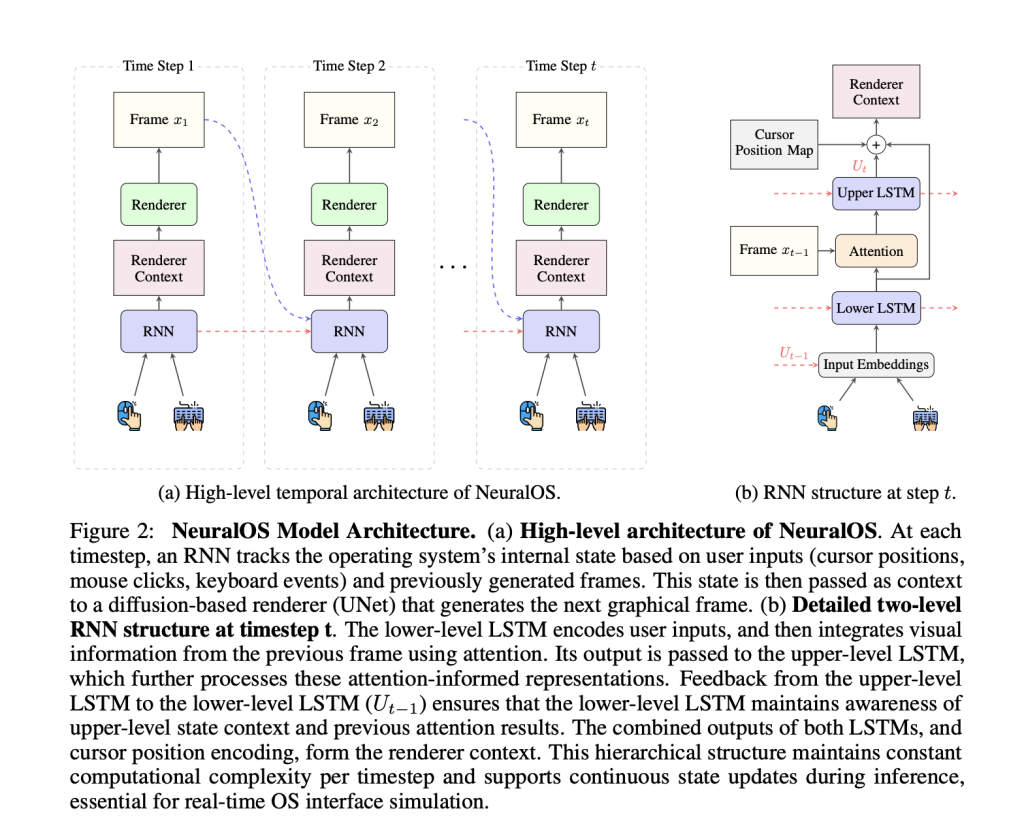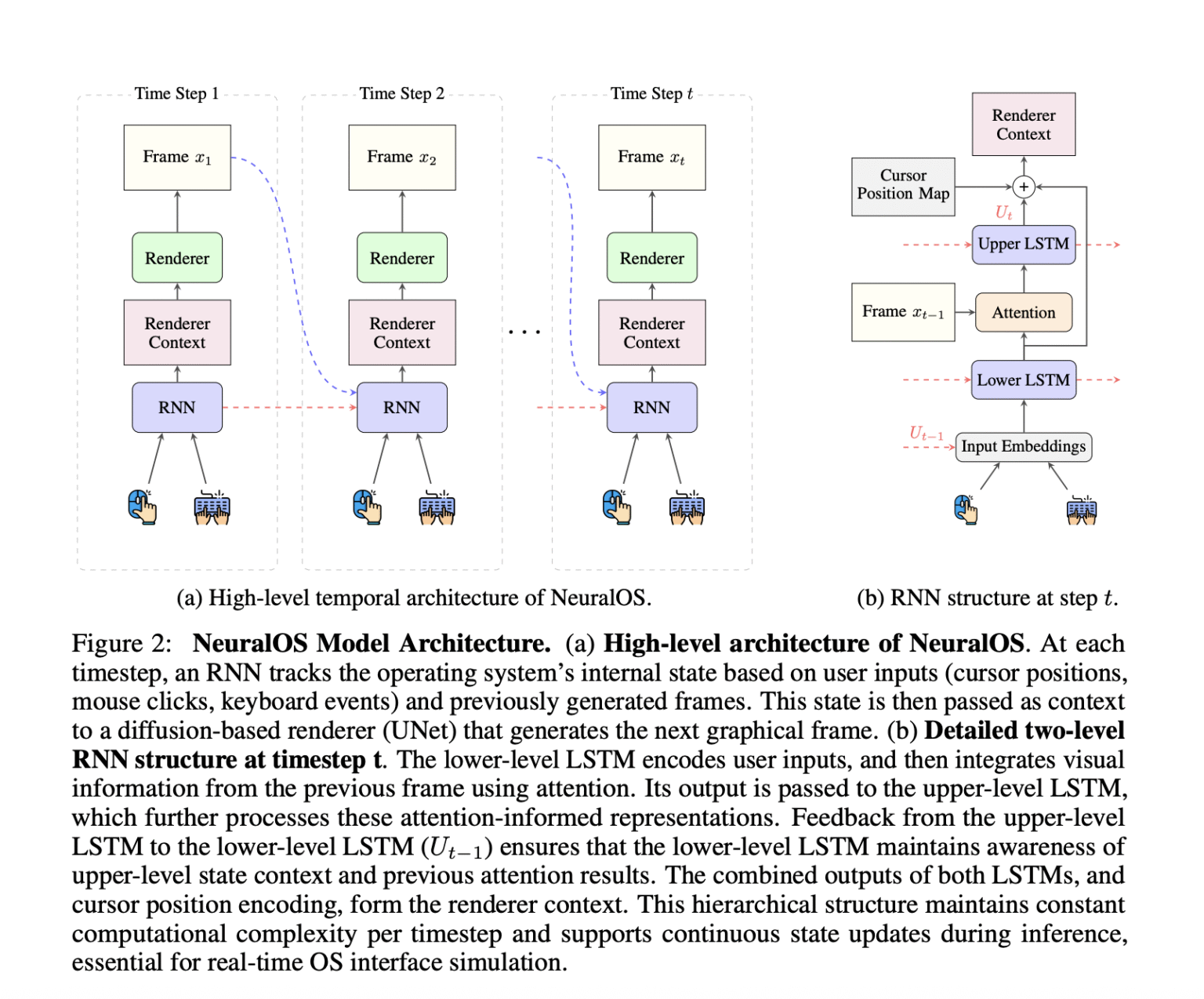Transforming Human-Computer Interaction with Generative Interfaces
Recent advances in generative models are transforming the way we interact with computers, making experiences more natural, adaptive, and personalized. Early interfaces, command-line tools, and static menus were fixed and required users to adapt to the machine. Now, with the rise of LLMs and multimodal AI, users can engage with systems using everyday language, images, and even video. Newer models are even capable of simulating dynamic environments, such as those found in video games, in real-time. These trends point toward a future where computer interfaces aren’t just responsive, they’re generative, tailoring themselves to our goals, preferences, and the evolving context around us.
Evolution of Generative Models for Simulating Environments
Recent generative modeling approaches have made significant progress in simulating interactive environments. Early models, such as World Models, utilized latent variables to simulate reinforcement learning tasks, while GameGAN and Genie enabled the imitation of interactive games and the creation of playable 2D worlds. Diffusion-based models have further advanced this field, with tools like GameNGen, MarioVGG, DIAMOND, and GameGen-X simulating iconic and open-world games with remarkable fidelity. Beyond gaming, models such as UniSim simulate real-world scenarios, and Pandora allows video generation controlled by natural language prompts. While these efforts excel at dynamic, visually rich simulations, simulating subtle GUI transitions and precise user input, such as cursor movement, remains a unique and complex challenge.
Introducing NeuralOS: A Diffusion-RNN Based OS Simulator
Researchers from the University of Waterloo and the National Research Council Canada have introduced NeuralOS. This neural framework simulates operating system interfaces by directly generating screen frames from user inputs, such as mouse movements, clicks, and keystrokes. NeuralOS combines a recurrent neural network to track system state with a diffusion-based renderer to produce realistic GUI images. Trained on large-scale Ubuntu XFCE interaction data, it accurately models application launches and cursor behavior, although fine-grained keyboard input remains a challenge. NeuralOS marks a step toward adaptive, generative user interfaces that could eventually replace traditional static menus with more intuitive, AI-driven interaction.
Architectural Design and Training Pipeline of NeuralOS
NeuralOS is built on a modular design that mimics the separation of internal logic and GUI rendering found in traditional operating systems. It uses a hierarchical RNN to track user-driven state changes and a latent-space diffusion model to generate screen visuals. User inputs, such as cursor movements and key presses, are encoded and processed by the RNN, which maintains system memory over time. The renderer then uses these outputs and spatial cursor maps to produce realistic frames. Training involves multiple stages, including pretraining the RNN, joint training, scheduled sampling, and context extension, to handle long-term dependencies, reduce errors, and adapt effectively to real user interactions.
Evaluation and Accuracy of Simulated GUI Transitions
Due to the high training costs, the NeuralOS team evaluated smaller variants and ablations using a curated set of 730 examples. To assess how well the model localizes the cursor, they trained a regression model. They found that NeuralOS predicted cursor positions with great accuracy within approximately 1.5 pixels, far outperforming models without spatial encoding. For state transitions such as opening apps, NeuralOS achieved 37.7% accuracy across 73 challenging transition types, significantly outperforming the baseline. Ablation studies revealed that removing joint training resulted in blurry outputs and missing cursors, whereas skipping scheduled sampling led to a rapid decline in prediction quality over time.

Conclusion: Toward Fully Generative Operating Systems
In conclusion, NeuralOS is a framework that simulates operating system interfaces using generative models. It blends an RNN to track system states with a diffusion model that renders screen images based on user actions. Trained on Ubuntu desktop interactions, NeuralOS can generate realistic screen sequences and predict mouse behavior; however, handling detailed keyboard input remains challenging. While the model shows promise, it’s limited by its low resolution, slow speed (1.8 fps), and inability to perform complex OS tasks, such as installing software or accessing the internet. Future work may focus on language-driven controls, better performance, and expanding functionality beyond current OS boundaries.
Check out the Paper and GitHub Page. All credit for this research goes to the researchers of this project. Ready to connect with 1 Million+ AI Devs/Engineers/Researchers? See how NVIDIA, LG AI Research, and top AI companies leverage MarkTechPost to reach their target audience [Learn More]
Sana Hassan, a consulting intern at Marktechpost and dual-degree student at IIT Madras, is passionate about applying technology and AI to address real-world challenges. With a keen interest in solving practical problems, he brings a fresh perspective to the intersection of AI and real-life solutions.



